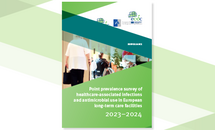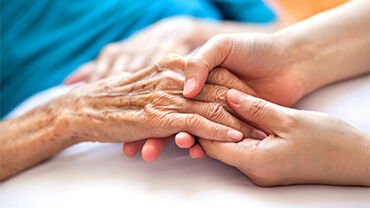Point prevalence survey of healthcare-associated infections and antimicrobial use in European long-term care facilities 2023-2024
In 2023–2024, the European Centre for Disease Prevention and Control (ECDC) organised the fourth point prevalence survey (PPS) of healthcare-associated infections (HAIs) and antimicrobial use in European long-term care facilities (LTCFs) (HALT-4).
The design of the PPS was based on the experiences and recommendations of the three previous PPSs in LTCFs organised by ECDC, i.e. the first HALT study in 2010, HALT-2 in 2013 2013 and HALT-3 in 2016-2017 [1–3]. Specifically, HALT-4 used a standardised PPS methodology which aimed:
- to estimate the prevalence of HAIs and antimicrobial use in LTCFs in the EU/EEA;
- to measure structure and process indicators of infection prevention and control (IPC) in these LTCFs. The data obtained through these PPSs are considered useful:
- to quantify the prevalence of HAIs and antimicrobial use in LTCFs, in EU/EEA countries and in the EU/EEA overall;
- to identify needs for intervention, training and/or additional IPC resources;
- to identify priorities for intervention and raising awareness at the national and local levels;
- to ensure the availability of healthcare and the safety of residents in LTCFs, and more generally the ageing population in the EU/EEA.
ECDC invited EU/EEA countries to participate in one or more out of three surveillance periods: April‒June 2023, September‒November 2023 and/or April‒June 2024.
Long-term care facilities were defined as facilities in which residents need constant supervision (24 hours), need ‘high-skilled nursing care’ (i.e. more than ‘basic’ nursing care and assistance for daily living) and are medically stable and do not need constant ‘specialised medical care’ (i.e. administered by specialised physicians) or invasive medical procedures (e.g. ventilation). The following facilities were excluded: hospital long-term care wards, hostel care (hotel without any kind of nursing care), sheltered care houses, day centres, home-based centres, and protected living.
The protocol requested that national survey coordinators (NSCs) classify LTCFs, by applying definitions provided in the protocol. This included 10 types of LTCF: general nursing home, residential home, psychiatric LTCF, LTCF for people with intellectual disabilities, LTCF for people with physical disabilitiesi, rehabilitation centre, palliative care facility, sanatorium, mixed LTCF (all or some of the above) and ‘other’ type of LTCF.
Download
Publication data
Infographic
Infographic: Healthcare-associated infections – a threat to residents of long-term care facilities in Europe
This infographic gives an overview of the problems with healthcare-associated infections (HAIs) and antimicrobial use in European long-term care facilities (LTCFs).








